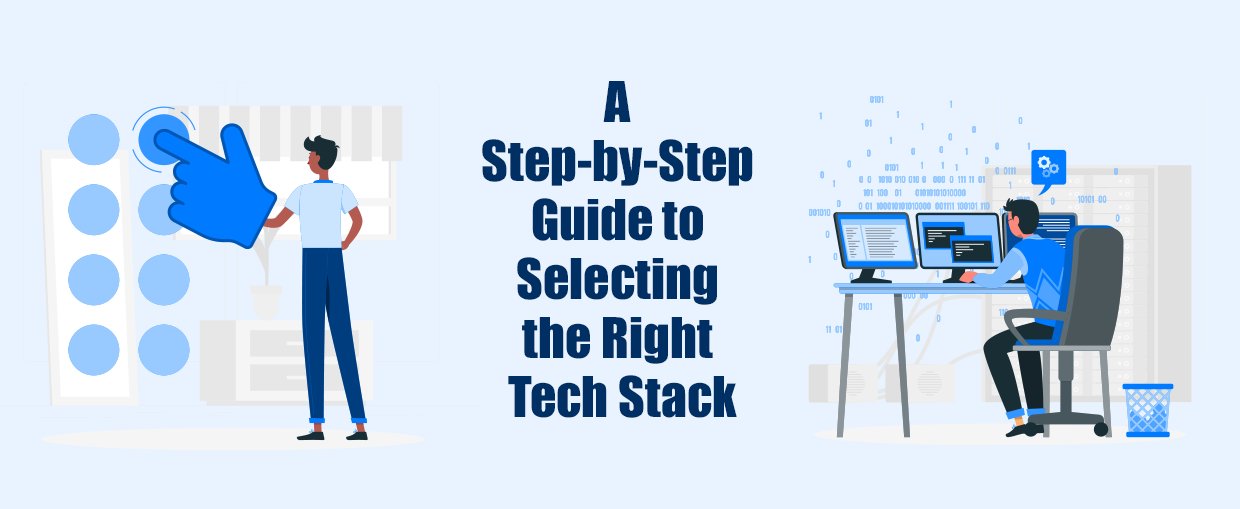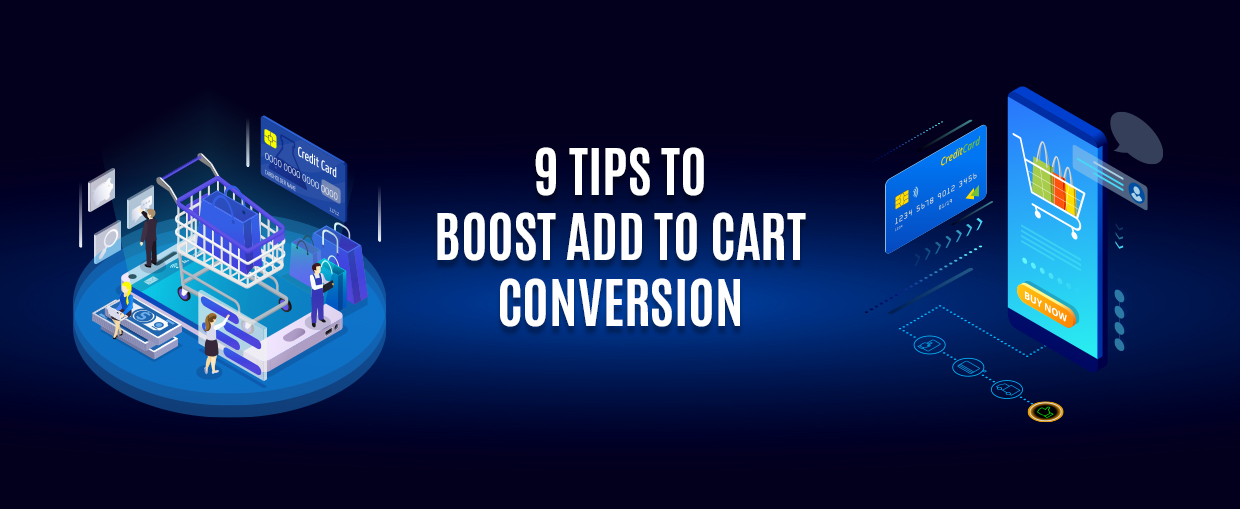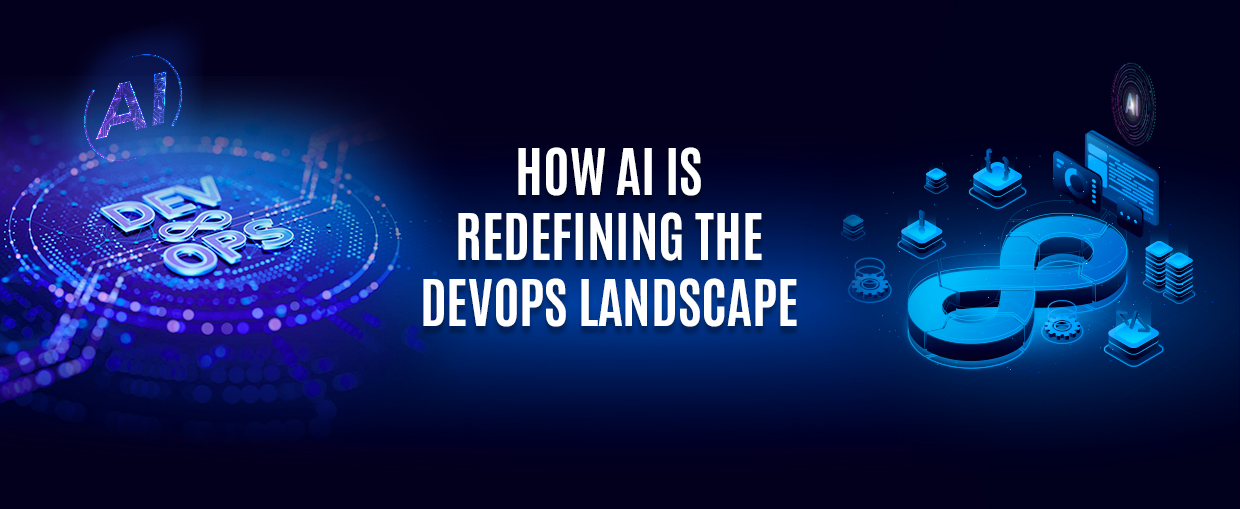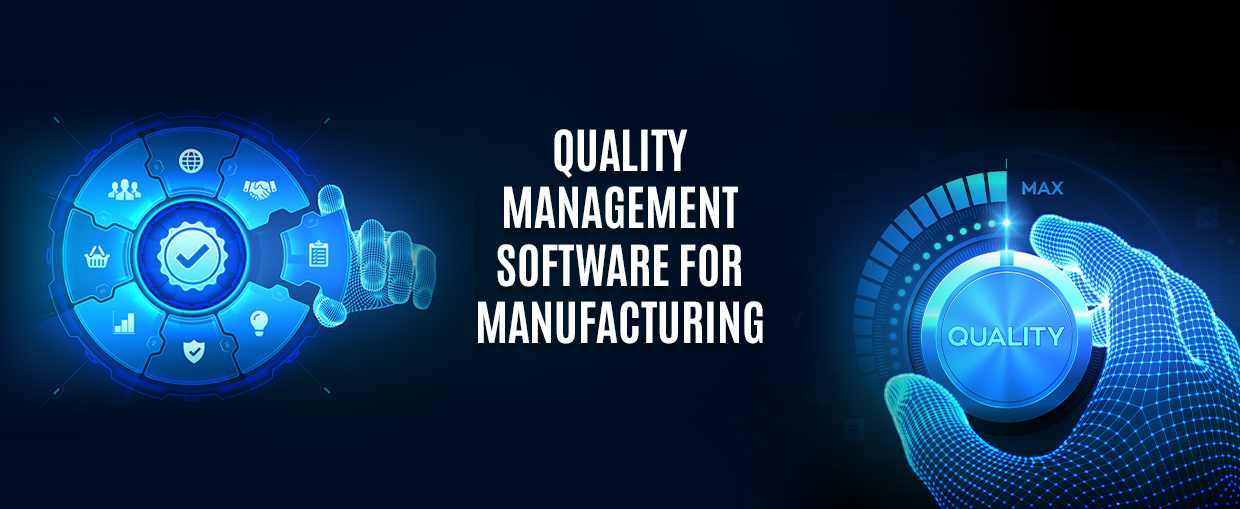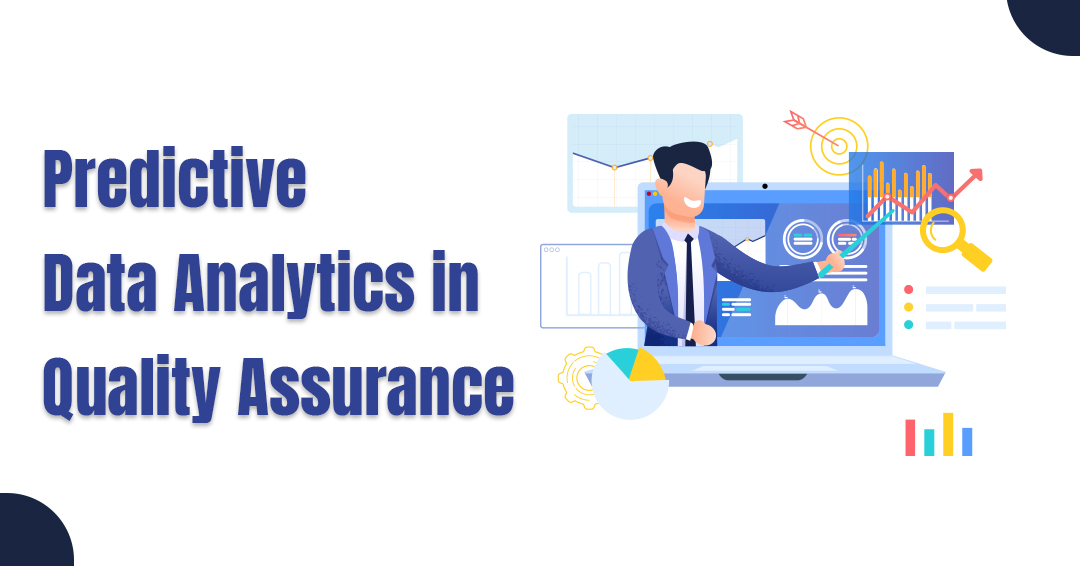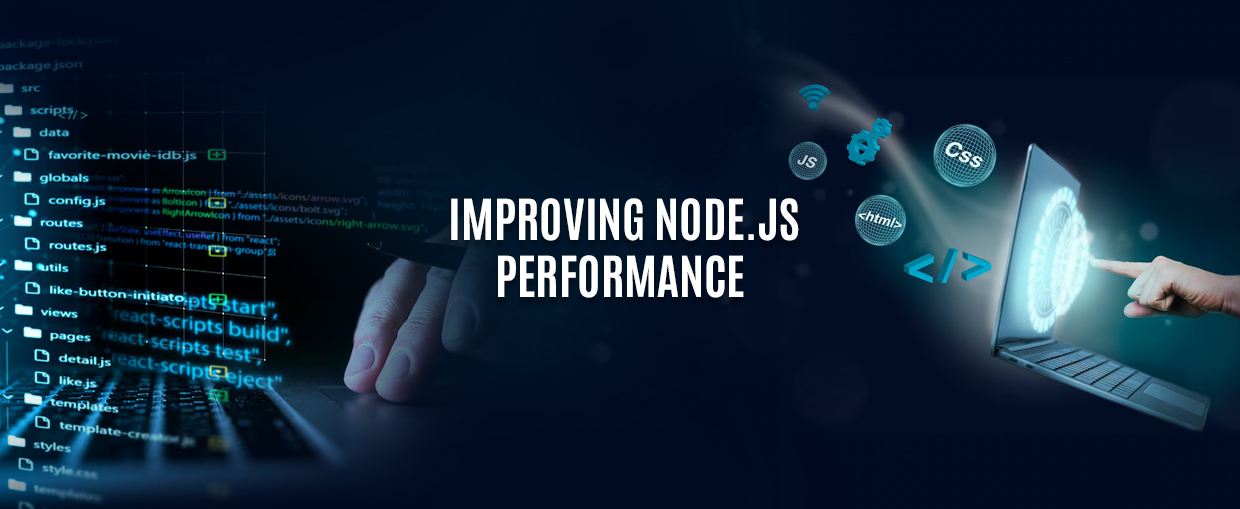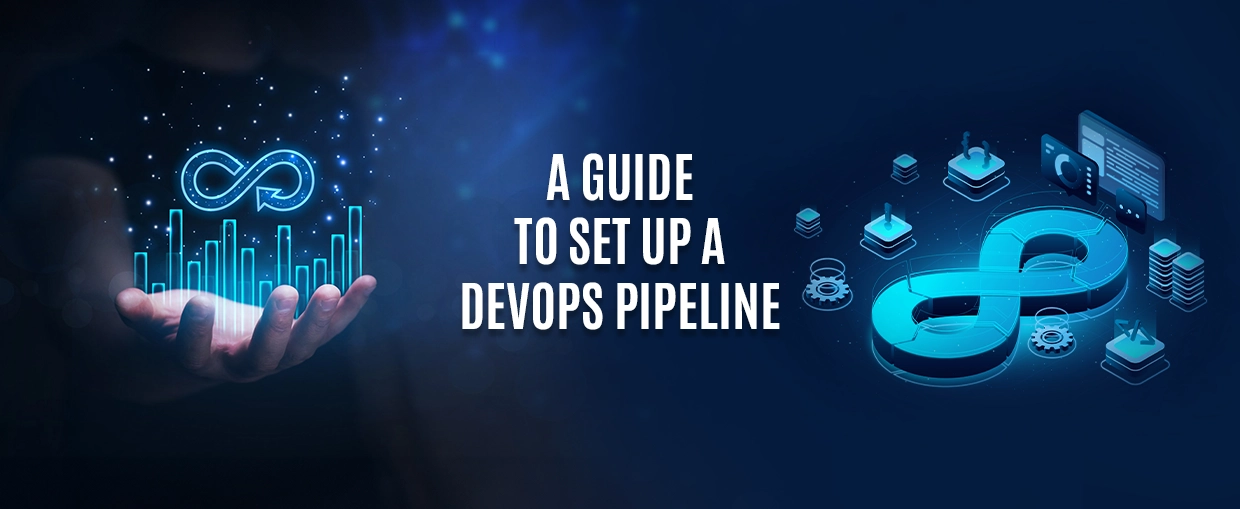In today’s digital marketing landscape, businesses are keen on developing mobile apps to engage their target audience effectively. While conceptualizing an eye-catching app idea tailored to your ideal customers is exciting, bringing that idea to life is far from simple. Astonishingly, only 0.5% of apps achieve success in the vast app marketplace, highlighting the challenges of app development. The process demands creating immersive, unique experiences that either solve a customer problem or provide entertainment.
Amidst all these excitements, a crucial step often overlooked is selecting the right tech stack. The technology stack you choose must align with your customer needs and long-term business goals. If you’re unsure which tech stack to adopt for your mobile app, this blog post will guide you through the essential steps to define the perfect tech stack for your project, ensuring you lay a strong foundation for success.
What is a Tech Stack?
The number of technologies needed to make an app possible and profitable is known as the tech stack. Programming languages, frameworks, database storage platforms, front-end and back-end tools, API integrations, operating system platforms, and other components that software developers combine for the creation and maintenance of web and mobile applications are all part of the tech stack.
In addition to enabling your app to improve and maximise scalability while maintaining the security parameters necessary for your business objectives, the appropriate tech stack can assist in providing extraordinary value for your ideal clients. The term “tech stack” refers to the fact that multiple layers are stacked on top of one another when creating an application. The layers combine different hardware modules, components, and programming codes to create a stack of diverse technologies.
Tech Stack Structure: Everything You Need to Know
Having discussed the definition of a technological stack, let’s look at its fundamental structure. The client-side and server-side, commonly known as frontend and backend, are the two fundamental components that make up a tech stack.
The Frontend Tech Stack
The interface that allows a user to interact with an application is called the frontend, or user side. Access, convenience, a satisfying user experience, calls to action, and events are its main goals. A vast array of technologies are available for use in frontend development for both mobile and web applications. They are all, in general, either directly or indirectly related to the combinational use of HTML, CSS, JavaScript, and other technologies. Here, we will address the most important ones.
For Web Applications
Content is generated and placed using HTML, or HyperText Markup Language. This language handles all of the page content layout and ordering. Cascading Style Sheets (CSS) are used to represent and objectify content materials. It mostly entails applying fonts, colours, layout features, background contents, and other elements.
Another role player is JavaScript. Its most common use is as a scripting language for browsers, which makes web pages interactive. Many JavaScript libraries, like as jQuery, Bootstrap, and Slick, are now available and integrated into popular frameworks like Angular, Vue.js, and React, enabling you to add sophisticated features to your user interface.
For Mobile Applications
Regarding mobile, there are two types of frontend technologies: native and hybrid. Cross-platform web technologies like HTML, CSS, and JavaScript are the foundation of hybrid development.
Likewise, native development relies on the utilization of native or cross-platform programming languages, like Java and Kotlin for Android, Objective-C, and Swift for iOS, React Native, Xamarin, and Flutter. As it gives you greater control and easier hardware access, using a native mobile app development technique is now much more preferred.
The Backend Tech Stack
The backend of an application is akin to its engine, driving the functionality and ensuring smooth operation by handling user requests, database access, and executing CRUD operations—Create, Read, Update, and Delete. Key components of the backend include programming languages, servers, server-side frameworks, operating systems, databases, and APIs, alongside business logic, hosting, and deployments.
Common backend stacks like MEAN and LAMP exemplify these elements. While PHP remains widely used, other popular languages and frameworks include Ruby on Rails, .NET, Spring for Java, Swift or Objective-C and Django and Flask for Python. These frameworks are favoured for their reliability in implementing essential features like user authentication and data access, with Ruby and Python particularly noted for their efficiency in rapid prototyping.
Middleware
Middleware is software that facilitates communication between two or more systems, applications, or components. It acts as a hidden translation layer connecting the backend and frontend parts of an application, rather than serving as a developer tool. Typically written in Java or C#, middleware enables the parsing, communication, and management of data between an app and its server or database. Its crucial role extends beyond merely sending requests and responses, supporting the real-time distribution of actions.
Middleware includes application servers, web servers, content management systems, and other tools essential for the development and delivery of applications.
Choosing the Right Tech Stack: 6 Factors to Consider
The tech stack has significance since it is the tool used to develop software. So, don’t undervalue the importance of conducting research and analysis in order to choose the appropriate set of tools. Making the incorrect technological decision could cost you money, time, and other important project resources. Selecting your tech stack can be tricky, therefore you’ll need a proficient business analyst and skilled developers.
Given below is a list of factors to be taken into account while picking an appropriate tech stack.
1. Defining the Development Platform
Understanding your project’s expectations is crucial for selecting the right software development stack. Start by identifying your target audience and how they will use your app. Determine their preferred device—mobile phone or computer. Different tools and frameworks are needed for web apps versus mobile apps, and even within mobile, Android and iOS require distinct tech stacks. Decide if you need a single or multi-platform solution and choose accordingly. For a Minimum Viable Product (MVP), develop on the platform most popular with your users to save costs and quickly gather feedback.
Once you’ve defined the platform, assess all functional and non-functional parameters crucial for the project launch. Well-defined MVP requirements will dictate the necessary tools for reaching your goals and any additional tech stack needed for the market version.
2. Specifying the Type of Project
Consider your project’s size, complexity, processing strength, and business goals. For applications requiring multiprocessing or low latency, choose a tech stack that supports these needs. Small projects with simple requirements can often use less sophisticated technologies like CMS or WordPress for of web projects. Mid-size projects demand more technological commitment and may involve multiple programming languages and tools.
Complex projects, such as social networks or CRMs, require advanced tech stacks with diverse functionalities and integrations. Select a tech stack that aligns with your project’s specific needs and complexity.
3. Scalability
A tech stack’s role in application scalability is crucial for accommodating user and feature growth. Choose a stack that allows for adding new features, handling increased user numbers, and managing seasonal spikes in usage. Ensuring scalability must include both horizontal scaling, with multiple servers managing user traffic and vertical scaling, adding more programs to process new data types. Scaling both horizontally and vertically safeguards your application from crashing during peak usage periods.
4. Team Expertise
Consider your team’s expertise when selecting a tech stack, unless you’re outsourcing. Developers typically excel in certain languages and tools, so choose a stack that aligns with their skills. Ensure your team can effectively utilize the chosen stack to avoid the need for hiring external experts. If time permits, train your team accordingly; otherwise, outsourcing may be necessary to meet deadlines. It’s crucial to match your team’s skills and experience with the chosen technology. Additionally, opt for a tech stack with a large developer community and ample reference materials, such as GitHub and StackOverflow to prevent issues and ensure smooth development.
5. Maintenance
When selecting a tech stack, consider your team’s ability to maintain the application post-launch. Opt for languages conducive to short, reusable, and easy-to-maintain code, simplifying future debugging and processing. Choose technologies aligning with your software architecture, facilitating scalability, portability, and reusability. Prioritize options allowing both static and dynamic component configurations for seamless application performance, even with increased user engagement or feature additions.
6. Costs
When selecting a technology stack, financial factors are paramount. While many popular open-source frameworks and tools are free, some may require subscription fees for special features or maintenance costs. Licensing fees and developer salaries for certain tech stacks should also be considered. Additionally, training costs may arise for specific technologies. Ultimately, the overall cost and effectiveness of the features should guide your choice of tech stack.
A Closer Look at Some Popular Tech Stacks
1. .NET Stack
Microsoft’s technology stack is centred around the.NET framework. A multitude of over 60 frameworks, platforms, SDKs, IDEs, SOA, and libraries, to name a few, have been made available by the Common Language Infrastructure from C#, F#, VB.NET, Fantom, etc.
You should consider .NET programming if you want a dynamic and interactive web application. Along with other open-source technologies, .NET can be used to create various server-side web applications and processing systems for enterprise-level business transactions. It fits the description of an all-inclusive tech stack for web front-end and database development because it is a subset of the Overflow Stack family. As .NET apps have a highly quick runtime and are simple to create, developers can meet deadlines with ease. Compatibility across several platforms allows for the creation of diverse features. The best.NET developers take advantage of that.
Developers can choose any framework or technology to work with because .NET applications can be easily ported. Developers are also able to work with different languages with it. Lastly, it secures its applications by using code access security (CAS).
2. LAMP Stack
The LAMP stack, comprising PHP, Linux operating system, Apache HTTP Server, and MySQL relational database management system, is a widely used open-source software suite favoured for its reliability and longevity. It’s versatile, supporting Perl and Python alongside PHP, making it suitable for dynamic websites and applications. Combining with other open-source programs enhances its interoperability, usability, and customization options.
Other LAMP variants consist of:
- LAPP (Linux/Apache/PostgreSQL/PHP)
- XAMPP (Linux, Mac OS X, Windows/Apache/MySQL/PHP, Perl)
- WAMP (Windows/Apache/MySQL/PHP)
- MAMP (Mac OS X/Apache/MySQL/PHP)
3. MEAN Stack
An open-source software suite that JavaScript developers use to create dynamic websites and web apps is called MEAN stack. It is hence the ideal option for creating scalable applications. What comprises the MEAN Stack is as follows:
- MongoDB
- Express.js
- Javascript MVC
- Node.js
The MEAN stack makes it simple to construct apps for both client-side and server-side settings because of support programs written in JavaScript. MEEN, or MongoDB, Express.js, Ember.js, and Node.js, is an additional variant of MEAN.
Wrapping Up
Selecting the appropriate tech stack depends on the project’s needs and the expertise of the team developing it. A project may succeed or fail based on this choice.
To choose which frameworks and technologies are suitable for the desired project, you can also consult with your developers, project managers, and business analysts. If your team lacks capacity, you may want to train existing developers or hire developers from outside. Or seek assistance from a reputed software development company that offers the best app development services to suggest to you the most appropriate tech stack for your project. Their QA consulting services can help ensure that you deliver highly reliable software solutions with the right tech stack. Have any queries? Feel free to contact us!

